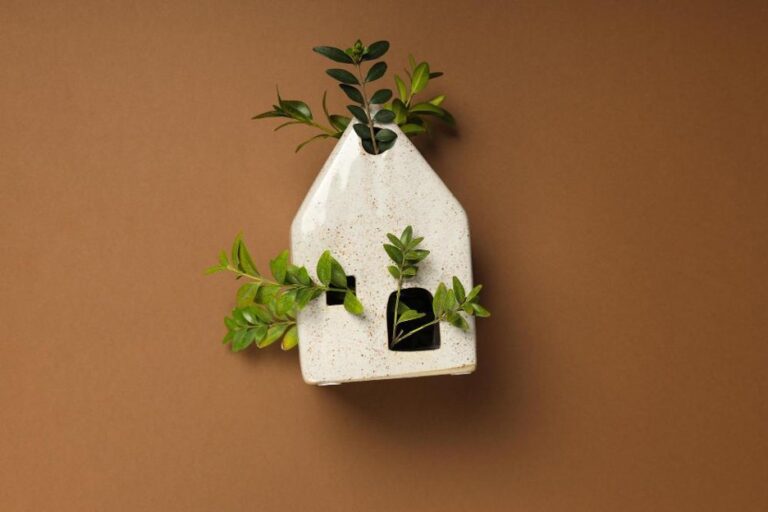Using the Zero Waste Hierarchy to Create an Eco-Friendly Home
 Since we are spending more time indoors than ever, there has never been a better time to cultivate an eco-friendly home. And one simple way to do this is to embrace zero waste.
Since we are spending more time indoors than ever, there has never been a better time to cultivate an eco-friendly home. And one simple way to do this is to embrace zero waste.
Zero waste is a movement that aims to eliminate waste from both landfills and the ocean. On an individual level, this translates to being more mindful of your habits and purchases, to reduce your waste output, and to decrease your resource consumption. If it sounds difficult, we promise it isn’t—following the zero waste hierarchy and the 5Rs will guide you in the right direction.
Using the Zero Waste Hierarchy
The zero waste hierarchy is an internationally recognized set of guidelines by the Zero Waste National Alliance (ZWIA). It consists of seven tiers of descending priority. Below you will find each tier, along with examples of how to apply them to various rooms in your home.
1. Rethink / Redesign
Assess if you genuinely need an item, try borrowing or renting instead of buying, and find sustainable alternatives.
Kitchen
- Use pot lids or plates to cover bowls and eliminate plastic wrap.
- Swap out sponges for compostable scrubbers made from coconut husks.
- Borrow a novelty cake pan from a friend instead of buying one.
Bathroom
- Try using a shampoo bar to ditch plastic bottles.
- Trade your disposable razors in for a safety razor.
- Replace single-use menstruation products with period underwear, menstrual cups, or reusable pads.
Bedroom
- Aim for long-lasting sheets made from sustainable material like flax linen.
- Consider renting clothes or buying secondhand instead of buying new.
- Decorate with plants instead of knick-knacks.
Other
- Bring reusable grocery bags to the store to replace plastic bags.
- Rent tools for infrequent home repair jobs.
- Gift experiences instead of material items.
- Subscribe to a toy library instead of buying new toys.
2. Reduce
For anything you can’t cut out your life entirely, look for ways to reduce your consumption.
Kitchen
- Meal plan to decrease your food waste.
- Use only a dollop of dish soap.
- Turn off the water when scrubbing dishes.
Bathroom
- Cut down on the number of beauty products in your routine.
- Reduce the amount of toilet paper you use by installing a bidet.
- Limit your time in the shower to save water.
Bedroom
- Install LED lightbulbs to reduce energy consumption.
- Turn down the heat at night.
- Put the TV on a sleep timer if you often fall asleep with it on.
Other
- Swap to energy-efficient appliances once yours no longer work.
- Open blinds to take advantage of natural lighting during the day.
- Grow your own produce to reduce the amount you have to go to the grocery store.
3. Reuse
Take advantage of what you already have on hand—this is a great place to get creative and save money.
Kitchen
- Upcycle your glass food containers for bulk shopping and storage.
- Use a mug with a broken handle as an herb pot.
- Make a self-watering planter from a bottle.
Bathroom
- Refill empty travel-sized bottles instead of getting new ones.
- Reuse old toothbrushes to scrub stains and hard to reach places.
- Cut up old towels to use as cleaning rags.
Bedroom
- Mend clothing and bedding when it tears or gets a hole.
- Reuse an old stool as a nightstand.
- String up some Christmas lights for year-round ambiance.
Other
- Fill an empty wine bottle with water and place neck down in plant soil to create an automatic waterer.
- Upcycle toilet paper rolls into compostable seedling pots.
- Use dryer lint as a fire starter.
4. Recycle / Compost
For anything that you can’t reuse, take special care to place these items in the correct waste streams. This helps push us closer to a circular economy and saves natural resources.
Kitchen
- You want to ensure you are reducing food waste by composting. Check to see what your city allows in their compost bins or start your own backyard compost pile.
- Wash out any recycling before it goes into the recycling bin. Otherwise, it won’t be recyclable and can contaminate other recyclables—making them unsalvageable as well.
Bathroom
- Hair, nail clipping, and cotton swabs are all compostable, so don’t throw them in the trash
- Many beauty product bottles and jars can get recycled.
Bedroom:
- When you are cleaning out your closet, be sure to donate any useable items to extend their lifespan and keep them out of landfills.
Other:
- Donate any useable electronics and drop off broken or outdated ones at an electronic recycling center to reduce e-waste in landfills.
- Bring items like light bulbs, used pens, markers, and batteries to their respective recycling stations. These can be found in select electronic stores, hardware stores, and office supply depots.
5. Material Recovery
This step generally refers to pulling things out of the waste stream to reuse them, so it is harder to apply to a household. However, this may include:
– Using items that have been thrown to the curb and upcycling them for your home. For example, a cabinet that got tossed can make an eye-catching DIY coffee bar.
– Asking people to collect and donate certain waste items to you for kids’ crafts, art, a business idea, or another use.
6. Residual Management
Take a look at the waste produced and brainstorm ways to reduce it.
You can do this at home by conducting a trash audit. A trash audit involves sifting through your garbage, assessing your waste, and implementing solutions to reduce it in the future. In fact, this is a great starting point for any zero waste journey.
7. Unacceptable
This is the lowest level on the hierarchy and refers to incinerating waste, toxins in consumer products, and policies that support these practices.
The 5Rs of Zero Waste
If the zero waste hierarchy feels a little confusing, don’t fret. There is a simplified called the 5Rs of zero waste coined by zero waste activist, Bea Johnson. While it uses the same steps as the hierarchy, many find it easier to remember since it is an expansion of the globally recognized 3Rs. The 5Rs are as follows.
Refuse anything you don’t need.
Reduce what you do need.
Reuse what you have.
Recycle anything you can’t reduce or reuse.
Rot the rest (compost).
Which hierarchy is best? Whichever one works for you! After all, there isn’t only one way when it comes to zero waste—zero waste living is a lifelong journey filled with trial and error. But if you stick with it to find what works for you, you can not only create an eco-friendly home, but also cultivate a healthier lifestyle, save money, and contribute to a sustainable future for our planet.
Author Bio
Shannon Bergstrom is a LEED Green Associate, TRUE waste advisor. She currently works at RTS, a tech-driven waste and recycling management company, as a sustainability operations manager. Shannon consults with clients across industries on sustainable waste practices and writes for Zero Waste.


